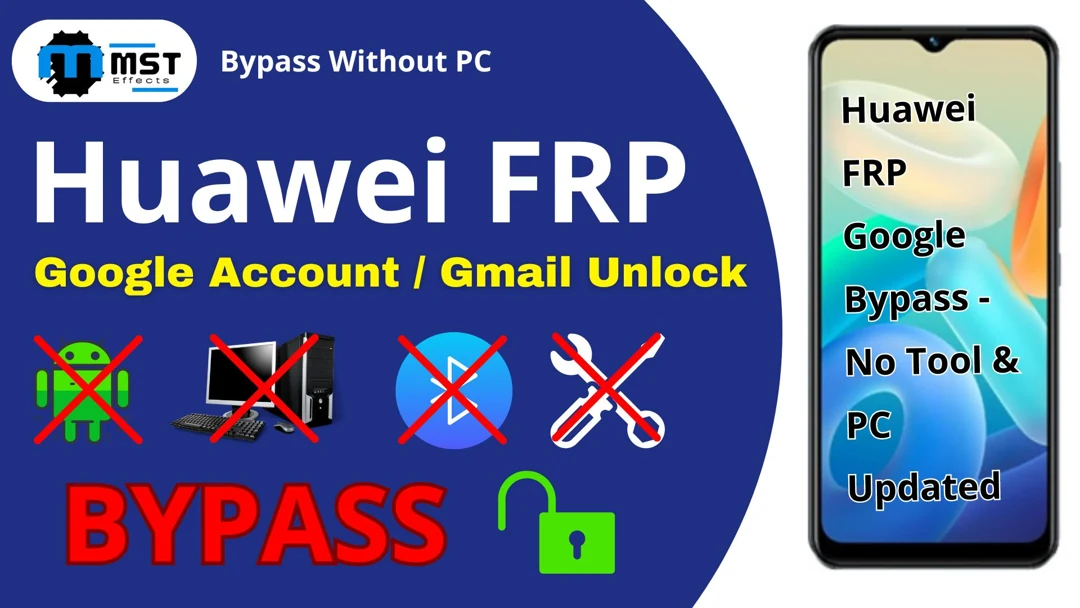Are you locked out of your Huawei Phone due to Factory reset Protection (FRP)? FRP is a security feature on the Android phone. The purpose of this feature is to prevent unauthorized use, particularly in cases where your device is missing or stolen. It is a frustrating situation if you are locked out of your phone without any tools or a PC. Only be capable of sigh. But what if I told you there was a way to bypass that security feature without any additional equipment?
Here we will discuss the new ways of Huawei FRP Google Bypass without using any tools or a PC. Even if you forgot your Google ID details or just bought a second-hand device with an unknown Google account, our step-by-step guide below will ensure that You can access the Huawei phone again in no time.
Methods to Bypass Huawei FRP Google Without Tools or PC
Here, we look at the best ways to remove your Huawei FRP Google Bypass without tools and a PC. Updated for 2024, the following methods have been tried and tested to work on most, if not all, Huawei devices.
Method 1: Using Emergency Call
Step 1: Switch on your Huawei device and connect to a Wi-Fi network.
Step 2: To start an emergency call, select “Emergency Call” from the setup screen.
Step 3: Now press ##1357946## to open the calendar app.
Step 4: Create a new calendar event. Add a URL to the description of a new calendar event.
Step 5: Clicking on the URL will open your browser.
Step 6: First, download and install the QuickShortcutMaker app from a trusted source.
Step 7: Go to the QuickShortcutMaker app and search for “Google Account Manager.”
Step 8: Search for “Sign in using the Email and Password option” and select it to open.
Step 9: To successfully complete the Huawei FRP Google Bypass , you must add your new Google account here.
Method 2: Using Google Keyboard (Gboard)
Step 1: First, connect your Huawei device to a Wi-Fi network.
Step 2: Go to the Google Account verification screen.
Step 3: So tap the email or password field, and the keyboard will pop up.
Step 4: Pressing the ‘@’ symbol changes the Gboard settings.
Step 5: Touch the three-dot menu for Gboard settings. Then, click on Help & Feedback.
Step 6: Use Morse code (search in the help).
Step 7: Click the “Use Morse Code” link to the YouTube video.
Step 8: Tap the video share button, then press email or Gmail.
Step 9: Next, click Compose from New Email, and then add your Google account.
Method 3: Using TalkBack Feature
Step 1: Turn on your Huawei device and connect to Wi-Fi.
Step 2: Hold both volume buttons until TalkBack responds with “TalkBack activated.”
Step 3: Draw an ‘L’ shape on the screen to open the global context menu.
Step 4: Tap on “TalkBack Settings” and turn off TalkBack.
Step 5: Scroll down and select “Help & Feedback” under TalkBack settings.
Step 6: Now, find the search bar, type “voice,” and tap on “Get started with Voice Access.”
Step 7: Play the YouTube video, and select the share button from the video.
Step 8: Then open Gmail, add a new Google account, and complete Huawei FRP Google Bypass .
FAQs About Huawei FRP Google Bypass
What is FRP and why is it important?
FRP (Factory Reset Protection) is a built-in security feature on Android devices that requires Google account verification after the factory reset, which prevents access from unauthorized persons.
Can I bypass FRP without a PC or tools?
The Huawei FRP Google bypasses methods that require tools or a PC, including emergency calls, the Google Keyboard (Gboard), and the TalkBack feature.
Are these methods safe to use?
The latest Huawei devices have validated these legitimate methods. However, it is necessary to follow these steps very carefully without falling into any trouble.
What should I do if these methods don’t work?
If these methods don’t work, you may need professional help or contact Huawei support for further assistance.
Can these methods be used on other Android devices?
These methods are only for Huawei handsets, but similar techniques might work on Android smartphones. These steps probably differ a little depending on your specific device and version of Android.
